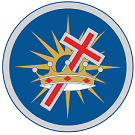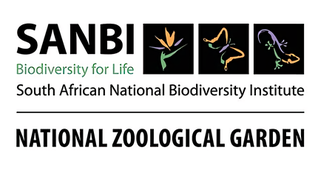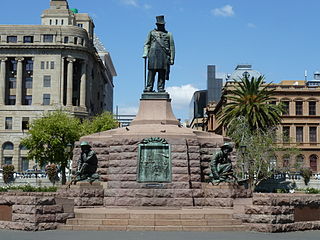14 Sights in Pretoria, South Africa (with Map and Images)
Legend
Premium Sights
Book tickets, guided tours and activities in Pretoria.
Guided Free Walking Tours
Book free guided walking tours in Pretoria.
Welcome to your journey through the most beautiful sights in Pretoria, South Africa! Whether you want to discover the city's historical treasures or experience its modern highlights, you'll find everything your heart desires here. Be inspired by our selection and plan your unforgettable adventure in Pretoria. Dive into the diversity of this fascinating city and discover everything it has to offer.
Sightseeing Tours in PretoriaActivities in Pretoria1. Voortrekker Monument
The Voortrekker Monument is located just south of Pretoria in South Africa. The granite structure is located on a hilltop, and was raised to commemorate the Voortrekkers who left the Cape Colony between 1835 and 1854. It was designed by the architect Gerard Moerdijk.
2. Apostolic Faith Mission

The Apostolic Faith Mission of South Africa (AFM) is a classical Pentecostal Christian denomination in South Africa. With 1.2 million adherents, it is South Africa's largest Pentecostal church and the fifth largest religious grouping in South Africa representing 7.6 percent of the population. Dr. Isak Burger has led the AFM as president since 1996 when the white and black branches of the church were united. It is a member of the Apostolic Faith Mission International, a fellowship of 23 AFM national churches. It is also a member of the South African Council of Churches. The AFM is one of the oldest Pentecostal movement is South Africa with roots in the Azusa Street Revival, the Holiness Movement teachings of Andrew Murray and the teachings of John Alexander Dowie. The AFM had an interracial character when it started, but, as in American Pentecostalism, this interracial cooperation was short-lived. The decades from the 1950s to the 1980s were marked by the implementation of apartheid. After 1994, the white AFM moved rapidly towards unification with the black churches. By 1996, all the AFM churches were united in a single multi-racial church. The constitution of the AFM blends at the national level the elements of a presbyterian polity with an episcopal polity. Decentralization is a major feature of its constitution, which allows local churches to develop their own policies. The Apostolic Faith Mission displays a variety of identities and ministry philosophies, including seeker-sensitive, Word of Faith, Presbyterian, and classical Pentecostal.
Wikipedia: Apostolic Faith Mission of South Africa (EN), Website
3. The Church of Jesus Christ of Latter-day Saints
Three missionaries of the Church of Jesus Christ of Latter-day Saints started proselyting to white English-speaking people in Cape Town in 1853. Most converts from this time emigrated to the United States. The mission was closed in 1865, but reopened in 1903.The South African government limited the amount of missionaries allowed to enter the country in 1921 and in 1955. Starting around 1930, a man had to trace his genealogy out of Africa to be eligible for the priesthood, since black people were not permitted to be ordained. In 1954 when church president David O. McKay visited South Africa, he removed the requirement for genealogical research for a man to be ordained, stipulating only that "there is no evidence of his having Negro blood in his veins".
Wikipedia: The Church of Jesus Christ of Latter-day Saints in South Africa (EN), Website, Facebook
4. Pretoria Zoo

The National Zoological Garden of South Africa is an 80-hectare (200-acre) zoo located in Pretoria, South Africa. It is the national zoo of South Africa, and was founded by J. W. B. Gunning in 1899. Pretoria Zoo is one of the eight largest zoos in the world
Wikipedia: Pretoria Zoo (EN), Website, Twitter, Facebook, Instagram
5. Church Square

Church Square, originally Market Square, is the square at the historic centre of the city of Pretoria, Gauteng, South Africa. The founder of Pretoria, Marthinus Pretorius, determined that the square be used as a market place and church yard. It was subsequently named for the church buildings that stood at the centre of the square from 1856 to 1905. The square's most prominent feature, since June 1954, is the statue of the late Boer leader and president of the South African Republic, Paul Kruger, at its centre. Statues of four anonymous Boer citizen-soldiers surround that of Kruger on a lower level of the plinth.
6. Paul Kruger Statue
The Statue of Paul Kruger is a bronze sculpture located in Church Square in Pretoria, South Africa. The statue depicts Paul Kruger, the Boer political and military leader and President of the South African Republic from 1883 to 1900, and four unnamed Boer soldiers. The Statue of Paul Kruger was sculpted in 1896 and was installed in its current location in Church Square in 1954.
7. National Museum of Natural History
The Ditsong National Museum of Natural History, formerly the Transvaal Museum, is a natural history museum situated in Pretoria, South Africa. It is located on Paul Kruger Street, between Visagie and Minnaar Streets, opposite the Pretoria City Hall. The museum was established in 1895 by the former South African Republic, also known as the Transvaal. In 2010 it was one of the founding museums of Ditsong Museums of South Africa.
Wikipedia: Ditsong National Museum of Natural History (EN), Website
8. Kruger House

Kruger House is the historical Pretoria residence of the Boer leader and President of the South African Republic, Paul Kruger. It was built in 1884 by architect Tom Claridge and builder Charles Clark. Milk was used, instead of water, for mixing the cement from which the house was constructed, as the cement available was of poor quality.
9. National Cultural History Museum
The Ditsong National Museum of Cultural History is a museum that showcases the various stages and forms of culture in South Africa. It is part of the Ditsong Museums of South Africa. The museum is located in Pretoria, Gauteng, South Africa.
10. Pretoria National Botanical Garden
The Pretoria National Botanical Garden is one of South Africa's nine National Botanical Gardens. The garden is wedged between Pretoria Road and Cussonia Avenue in Brummeria, in eastern Pretoria, Gauteng, and flanks a central rocky ridge that runs from east to west. The 76 hectares (0.76 km2) garden was established in 1946, and of late hosts the headquarters of the South African National Biodiversity Institute.
11. Old Synagogue
The Old Synagogue, also known as The Pretoria Hebrew Congregation, is a former Orthodox Jewish congregation, synagogue, and apartheid-era court house on Paul Kruger Street in Pretoria, South Africa. It was consecrated in 1898 and closed as a synagogue in 1952, when the congregation moved to a larger site. The former synagogue building was subsequently expropriated and sold to the State for use as a Special Annex of the Supreme Court of South Africa between 1956 and 1977. In this period, Nelson Mandela was a defendant at the court in both the 1956 and the Rivonia treason trials. In 1977, it was the setting for an inquest into the death of Steve Biko. It is now a Grade II Provincial Heritage Resource and protected under the National Heritage Resources Act. The building and site remains under the control of the Department of Public Works and Infrastructure.
12. South African Air Force Memorial
The South African Air Force Memorial is a memorial to South African Air Force (SAAF) members who have died whilst in service of the South African Air Corps and its successor, the South African Air Force from 1915 to the present during times of war and times of peace. The memorial is located on Bays Hill in Swartkop outside Pretoria and overlooks Air Force Base Swartkop, the first air force base of the SAAF. An annual memorial service is traditionally held here in May.
13. Burgers Park
Burgers Park is a park located in the center of Pretoria, South Africa. Founded in the 1870s as a botanical garden, it covers four acres and has been declared a South African National Monument. It is named for Thomas François Burgers, fourth president of the South African Republic. A statue of President Burgers stands in the park. There is also a statue to the South African Scottish Regiment of the Second World War.
14. old arts

The Old Arts Building, on the main campus of the University of Pretoria, was one of the first structures built there. The building is located on the eastern side of an open courtyard facing the University of Pretoria Faculty of Engineering, the Built Environment, and Information Technology on the western side of same. The official city architect working for the Department of Public Works drew up the plans for the building. On August 3, 1910, Governor General of South Africa Herbert Gladstone, 1st Viscount Gladstone laid the cornerstone for a structure designed by John Johnstone Kirkness, and in 1911, the university moved to its current location.
Share
How likely are you to recommend us?
Disclaimer Please be aware of your surroundings and do not enter private property. We are not liable for any damages that occur during the tours.








